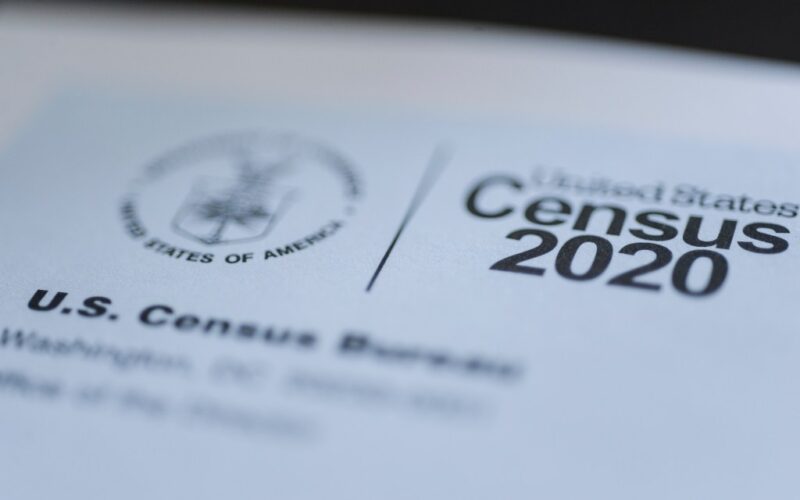Today, April 1, is the halfway mark between the 2020 and 2030 decennial census counts. New York State may lose at least two congressional districts — and potentially three or more — after the 2030 census, according to Census Bureau population projections.
New York’s slight population growth in recent years has been the result of increased immigration, mainly from Asia and South America. A full count of New York State residents, including non-citizens, is critical to protect against the upper range congressional district losses and to ensure New York receives its fair share of federal funding for more than 200 vital social service programs. Any undercount or shortfall in accuracy would risk billions in federal dollars to serve New Yorkers.
New York currently has 26 congressional districts, down from the 1950 high-water mark of 45. Since then, the state began losing districts due to population drops in and increases in other states’ populations, especially in the southern and western regions.
In fact, in each census since 1950, New York has lost a minimum of two congressional seats (and in some decades three to five seats.) In the 2020 census, New York had its best result on congressional seats since 1950, losing only one seat and falling just 89 people — the equivalent of a packed subway car during rush hour — short of losing no seats.
Trump administration actions and policy proposals threaten to exacerbate the challenges New York faces in achieving a full and fair 2030 census count. These include a renewed attempt to add a citizenship question to the decennial census, curtailing or eliminating the American Community Survey (ACS) and other annual census survey programs, and excluding undocumented immigrants from the congressional apportionment. The Trump administration has already eliminated the three important census advisory committees that provided the public with input into census planning and decision-making.
New York City’s investment in the 2020 census effort was significant, with a budget of $40 million and a fully staffed outreach and operations office. Those efforts led to New York City finishing first in the census count of major cities across the country, resulting in 600,000 more people counted, meaning approximately $1.8 billion a year for a decade.
A strong foundation for a robust effort to a full and fair count in 2030 should be set now and must be maintained throughout the decade to engage New Yorkers in understanding the census, its importance to everyday lives, funding, representation, business and economic planning, and so many other purposes.
New York needs a targeted rapid-response and proactive education program to inform and actively engage our residents, homeowners, renters, policymakers, media, community groups, and the general public about the census. Engaging in that effort now will go a long way to minimize undercounting and a miscount in 2030. Implementing that multi-year robust and pro-active 2030 Census outreach campaign now is crucial — before it’s too late to catch up.
New York can move forward by:
- Familiarizing and educating residents about the census and how it is used. In past census cycles, young children often were undercounted, in part because responders were confused about a child’s status.
- Beginning efforts in “hard to count communities” that historically have the lowest census response rates. This is important to make sure New York as a whole is not shortchanged and promotes fair representation and service allocations for all neighborhoods.
- Preparing counties, cities, and towns for the critical “Local Update of Census Addresses” (LUCA) effort to ensure that every household address in the state receives a census questionnaire in 2030. LUCA provides local governments with the ability to update and correct address lists used to send out census questionnaires to every household in 2030. Without accurate addresses, the census misses people.
- Enabling community based, nonprofit and academic organizations to reach into “hard to count” communities and to develop programming to ensure a complete count. Trusted messengers are important for community residents to have confidence in the information they are receiving.
We are supporting legislation to create a permanent New York City census office. In Albany, Assembly Deputy Majority Leader Michaelle Solages is sponsoring legislation to create a state census office, a citizen-led state New York Counts Commission, and authorization for census outreach and organizing grants for local community organizations.
These legislative efforts represent major steps forward for census education and outreach. It’s time to get started on the census. Let’s get New York moving forward on this challenge
Wice is a distinguished adjunct professor and senior fellow at New York Law School. Menin is a New York City Council Member representing the East Side of Manhattan and Roosevelt Island and served as the 2020 NYC census director.








